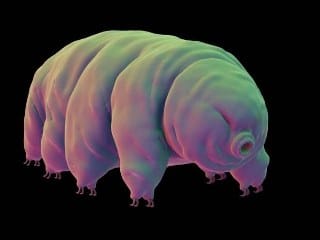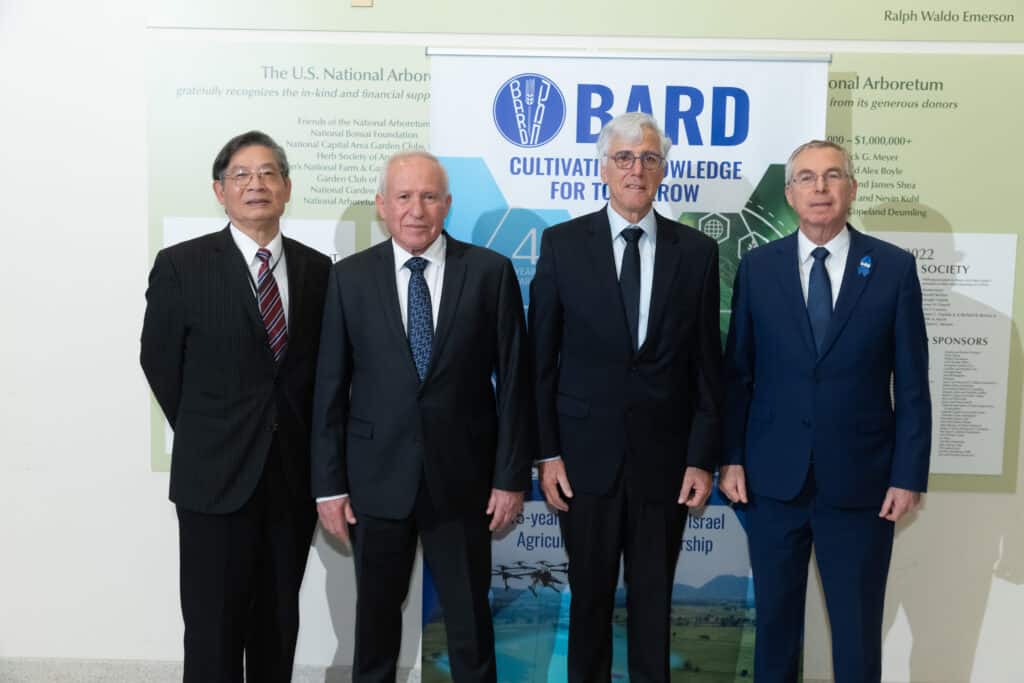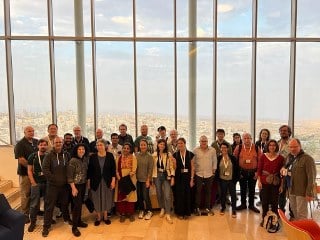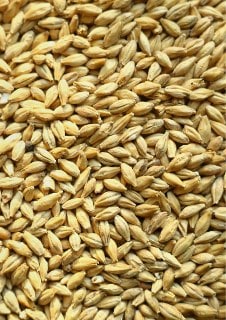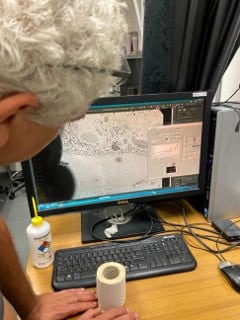
Ana Lyons from University of California, Berkeley received the BARD graduate student fellowship to study tardigrades at the Hebrew university
What was the main focus of your work at Prof. Braslavsky’s lab? What techniques were you working with? And what is their significance?
Working in Prof. Ido Braslavsky’s lab at the Hebrew University of Jerusalem, Faculty of Agriculture this summer was an extremely exciting opportunity, that allowed me to dig deeper into the mechanisms that underlie cold tolerance in a fascinating group of microscopic animals called tardigrades. Tardigrades (also known as “water bears”) are aquatic, miniaturized invertebrate animals—complete with four pairs of legs, a brain, and eyespots—that are well known for their abilities to survive environmental stress, such as desiccation, osmotic stress, and radiation. What is less known, however, is how tardigrades survive contact with ice and freezing conditions. These subzero conditions are a major stress that tardigrades face in their natural wintertime habitats, and we predict that tardigrades may have undiscovered biochemical adaptations to freezing and low temperature.
This summer, I was able to use custom-built equipment that is unique to Prof. Braslavsky’s lab, to study the biochemical behavior of proteins that tardigrades express at low temperatures. In particular, we used a piece of specialized equipment called a ‘nanoliter osmoter’ that allowed us to quantify if any of these tardigrade proteins cause a shift in the freezing and melting temperatures of physiological liquids at low temperatures. Such a shift in temperatures would indicate the function of antifreeze or ice-binding proteins, which could be one of several biochemical adaptations that tardigrades use to survive freezing. Experiments are still underway to confirm or dismiss the antifreeze function of these tardigrade proteins, with collaborators in the Braslavsky lab.
Another exciting avenue of research that we pursued this summer was the direct observation of tardigrade behavior and morphological structures at low temperatures and in the presence of ice, using the Braslavsky lab’s directional freezing apparatus. This custom-built equipment is one-of-a-kind worldwide, and it allowed us to take video of live tardigrades under magnification as they came into contact with ice at subzero temperatures, which has never been done before. Based on the behavior and optical properties of the tardigrades, we could then predict if the tardigrades underwent a phase change (or potentially froze) when engulfed in ice. We additionally imaged fixed tardigrades at low temperature, using a microCT scanner at the Imaging Core Facility of the Agriculture Faculty, with the hopes to gain additional insight into how subzero temperatures impact the morphology of tardigrade body structures.


What got you interested in tardigrades? And understanding cold tolerance in tardigrades?
I have been fascinated with tardigrades ever since I read about them in a chapter of a library book at the age of 15. I was amazed by how tiny but complex tardigrades were, in terms of their body structures, behavior, and survival strategies. I was also amazed by how little was known about tardigrades, and I was highly motivated to learn more about them. As a teenager, I wrote a letter to the author of this chapter on tardigrades (Prof. Diane Nelson), and I was mentored and supported to conduct biodiversity research on tardigrades by her. As soon as I saw my first live tardigrade under a microscope, I was hooked for life.
Ten years later, I began my PhD at UC Berkeley under the supervision of Prof. Caroline Williams, where I decided to focus on mechanisms of cold tolerance in tardigrades. I had the exciting opportunity in the second year of my PhD to spend several weeks in Antarctica, where I observed Antarctic tardigrades and became mesmerized by how animals can defy ‘the rules of life’ and survive such harsh freezing conditions.
Additionally, my decision to study cold tolerance in tardigrades was also inspired by the work of Prof. Ralph Schill, who mentored me for a year prior to starting my PhD at Berkeley, at the University of Stuttgart. Prof. Schill opened my eyes to the possibility that tardigrades may survive cold through a completely separate set of physiological mechanisms from what they use to survive desiccation, or it may be overlapping. Discovery of unique adaptations to cold would open up an entirely new avenue of research in tardigrade physiology and biochemistry, and potentially have downstream translational applications, which I found exciting.
How can the understanding of cold tolerance in tardigrades impact the understanding of cold tolerance in field crops?
The big-picture idea is that tardigrades may have unique proteins or biochemical mechanisms that allow them to survive freezing events, which we could mimic or introduce into genetically modified crop species. We are still characterizing the basic science of tardigrade cold tolerance proteins, so we are still likely years or decades away from such a translational application—but it is an exciting application that we hope will someday come to fruition and benefit society.
It is my ultimate hope that someday tardigrades will become as established of a model-system as C. elegans or D. melanogaster, and with the help of the Braslavsky lab and HUJI, we will have a wide range of cutting-edge techniques to study their unique and surprising biochemical and biophysical properties. Although I recently graduated from my PhD program, I have continued my work in tardigrades at University of California in San Francisco, and I will continue to collaborate with the Braslavsky lab remotely.

